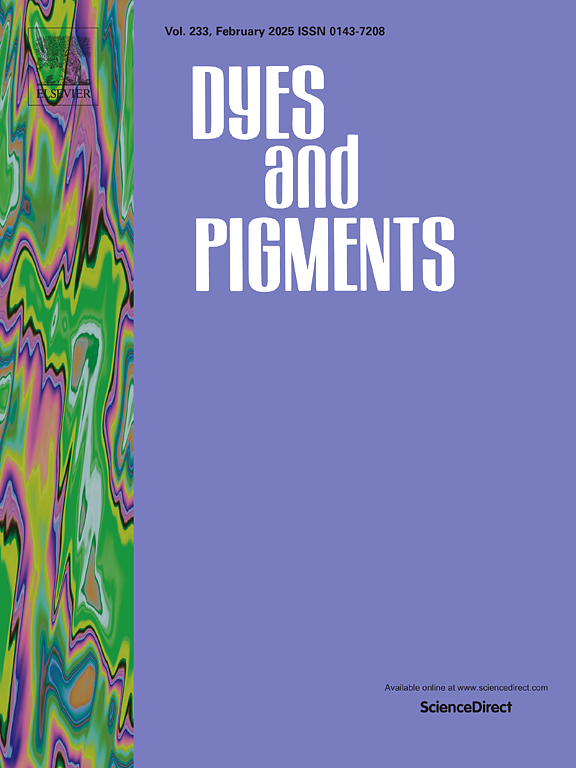9,10-Diphenylanthracene based fluorescent probes as reporters of lipid membrane phase transitions
IF 4.1
3区 工程技术
Q2 CHEMISTRY, APPLIED
引用次数: 0
Abstract
The two fluorescent probes 2-(2-bromoethoxy)-9,10-diphenylanthracene and 9,10-diphenylanthracene were evaluated for their suitability to report temperature-induced phase transitions in phospholipid formulations. Multilamellar liposomes were formed from two different lipids, 1,2-dipalmitoyl-sn-glycero-3-phosphocholine and 1,2-dipalmitoyl-sn-glycero-3-phosphoethanolamine and the probes were embedded in the bilayers. The fluorescence spectra of the embedded probes were collected over the temperature range of the lipid phase transitions. The transition temperatures were determined by differential scanning calorimetry and temperature-dependent fluorescence spectroscopy. The fluorescence lifetimes of the emitting species were calculated by time-resolved fluorescent spectroscopy in gel and fluid phases. The molecular dynamics simulations were employed to describe the impact of the probe positioning within the bilayer on their emitting properties. The probes did not significantly impact the physicochemical characteristics of the vesicles. Both probes can report on main lipid phase transitions in the two types of liposomes. However, upon transition from gel to fluid phase, the emitting species show longer-lived fluorescence.

求助全文
约1分钟内获得全文
求助全文
来源期刊

Dyes and Pigments
工程技术-材料科学:纺织
CiteScore
8.20
自引率
13.30%
发文量
933
审稿时长
33 days
期刊介绍:
Dyes and Pigments covers the scientific and technical aspects of the chemistry and physics of dyes, pigments and their intermediates. Emphasis is placed on the properties of the colouring matters themselves rather than on their applications or the system in which they may be applied.
Thus the journal accepts research and review papers on the synthesis of dyes, pigments and intermediates, their physical or chemical properties, e.g. spectroscopic, surface, solution or solid state characteristics, the physical aspects of their preparation, e.g. precipitation, nucleation and growth, crystal formation, liquid crystalline characteristics, their photochemical, ecological or biological properties and the relationship between colour and chemical constitution. However, papers are considered which deal with the more fundamental aspects of colourant application and of the interactions of colourants with substrates or media.
The journal will interest a wide variety of workers in a range of disciplines whose work involves dyes, pigments and their intermediates, and provides a platform for investigators with common interests but diverse fields of activity such as cosmetics, reprographics, dye and pigment synthesis, medical research, polymers, etc.
 求助内容:
求助内容: 应助结果提醒方式:
应助结果提醒方式:


